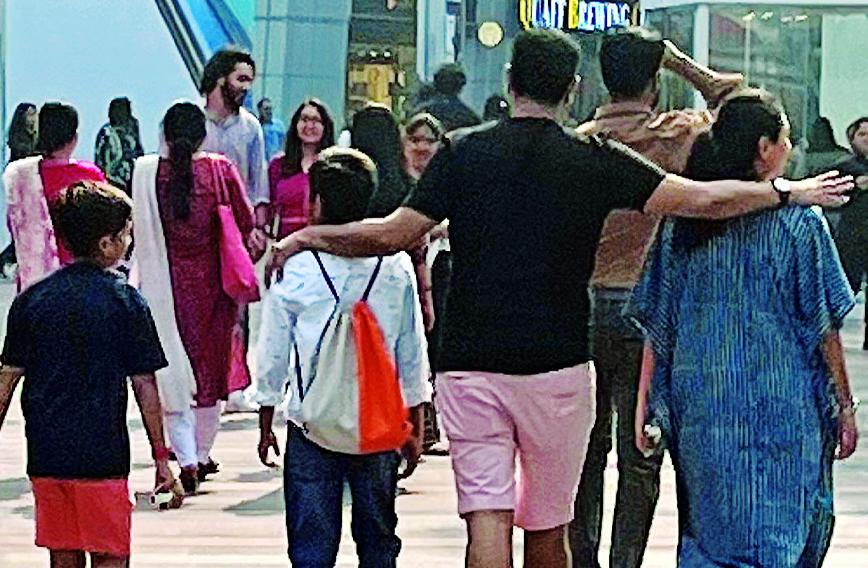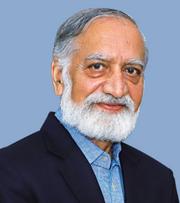

KIRAN KARNIK
MARRIAGE and family are institutions within which we have grown up, comfortable in the assumption that these are an integral or permanent part of the way our society is structured. These have endured, with some variations, over the centuries, having evolved as practical arrangements which also provide a safety net for difficult times. Yet, recent times are seeing some upheavals and radical shifts. As we look at the years and decades ahead, what changes might we see? In the face of technology-driven social turmoil, will these institutions continue to thrive or even survive?
An earlier column (‘Individualism and Identity’, Civil Society, October 2024) discussed the phenomenon of growing individualism and the countervailing movement towards group identities. An important driver of the former is the technological trend of creating new gadgets that are intended as personal or single-user devices. The best example of these is the whole host of uses — video viewing, music listening, voice calling, text messaging — packaged in a mobile handset, a form factor geared for individual consumption. Increasingly, it is also taking on a part of the role of computers — which have transitioned from room-sized “main-frames”, to PCs, to laptops and tablets, to the handset.
The mobile handset now also features an increasingly sophisticated camera, complete with flash, low-light, wide-angle, zoom, and video recording features. While this versatility makes it capable of taking all kinds of photographs, its most popular use is for “selfies”: a telling reflection of the individualism amongst the ‘I-me-mine’ generation.
Reinforcing this, and in parallel, there is the broader sociological change towards a stronger individual identity. Combined with — or driven by — rapid growth in wealth in a few segments, the trend manifests itself in various ways. Take simple daily-use items: limited earlier to toothbrushes, each one in the family now has their own, individual, bath soap and shampoo. With higher incomes, on the priority list is a separate bedroom for each youngster in the household, as is a car. Various factors drive this, but doubtless it also reflects a growing and wider trend. Just as a car has increasingly moved from a common family utility to an individual convenience, houses are transitioning from being a family home to a conglomeration of living spaces for individuals, with some common facilities (kitchen, drawing room). Separate bedrooms now also double as home offices, facilitating work from home (WFH), or as classrooms for learn-from-home. This, in turn, drives the need — and is a justification — for personal individual rooms.
Responding to the trend, corporate communication to consumers — advertising, promotional and marketing material — has progressed beyond customization. Thanks to Gen AI, it now mines and scrapes data about you from all sources and uses it to create individualized, personalized messages.
The family structure moved from multi-generational joint families to so-called nuclear families. Then, working couples brought back elders into the home, mainly to baby-sit their grandchildren, leading to the rebirth of the joint family. However, this resurgence may be halted by rapidly declining fertility rates. In fact, especially in the middle class, a substantial proportion of the population may be moving to the “double income, no kids” (DINK) stage. The result: no necessity of retired elders in the home.
In the low-income group, the migrants to cities used to be predominantly males. Now, with more job opportunities for females, the wife is increasingly joining her spouse soon after he has settled into a job. In most cases, children are with them. However, given the size of affordable homes, they are unable to accommodate retired parents from their village home. This means that the mother can work outside home only for very limited hours. Many poorer households make this trade-off, yet bringing their children to the city in the interest of better education, the perception being that city schools provide superior teaching. The first choice is inevitably a private school, even with its high fees, rather than a free government school. However, one can — as an optimist — see a future where government schools in villages provide quality education. With this, migrants may leave children in the village, while they continue to live in the city as a nuclear family; effectively DINKs, like their middle-class counterparts.
Does this portend a decline in family bonding and its loosening as a structural unit? With migration leading the youth to distant locations, many elders are now looked after by the extended family or the community. Will we see this happening for children too, with community care and nurture supplementing that of grandparents, since the parents are at a faraway location? Though communes and Israeli kibbutzes are now past tense, countries like Vietnam have adopted the community-care model for elders. It is possible that such community care and nurture could extend to children too. Will that mean the end of “family”? This may well be reinforced by another trend — growing globally, though yet rare in India: the preference to stay unmarried; sometimes with a live-in partner and, in other cases, just by oneself. Like cars with just one person and single-user gadgets, single-person homes may increasingly become the norm.
Yet, humans are basically social beings. Even after many months of Covid-forced quarantines and lockdowns, people everywhere were very soon back to mingling and joining crowds. While there is a focus on the self, on privacy, individuality, and being alone, there is also a longing for integrating in a group, of which the family is the smallest. In years to come, will it — as now — be supplemented by caste, religion, cult, or common-interest identities? Or will the family, as one group identity, die out? Will this change in the most basic unit of society lead to more drastic alterations in the broader societal structure? Will it lead to a desperation in finding other group identities and a fanatical loyalty to them? Apart from implications for individuals, will these changes have wider reverberations across all societies, globally? What changes will result in institutions and structures of governance? These are issues well worth pondering, for they have serious social, political, and economic ramifications that affect our future. n
Kiran Karnik is a public policy analyst and author. His most recent book is ‘Decisive Decade: India 2030, Gazelle or Hippo’
Comments
Currently there are no Comments. Be first to write a comment!



